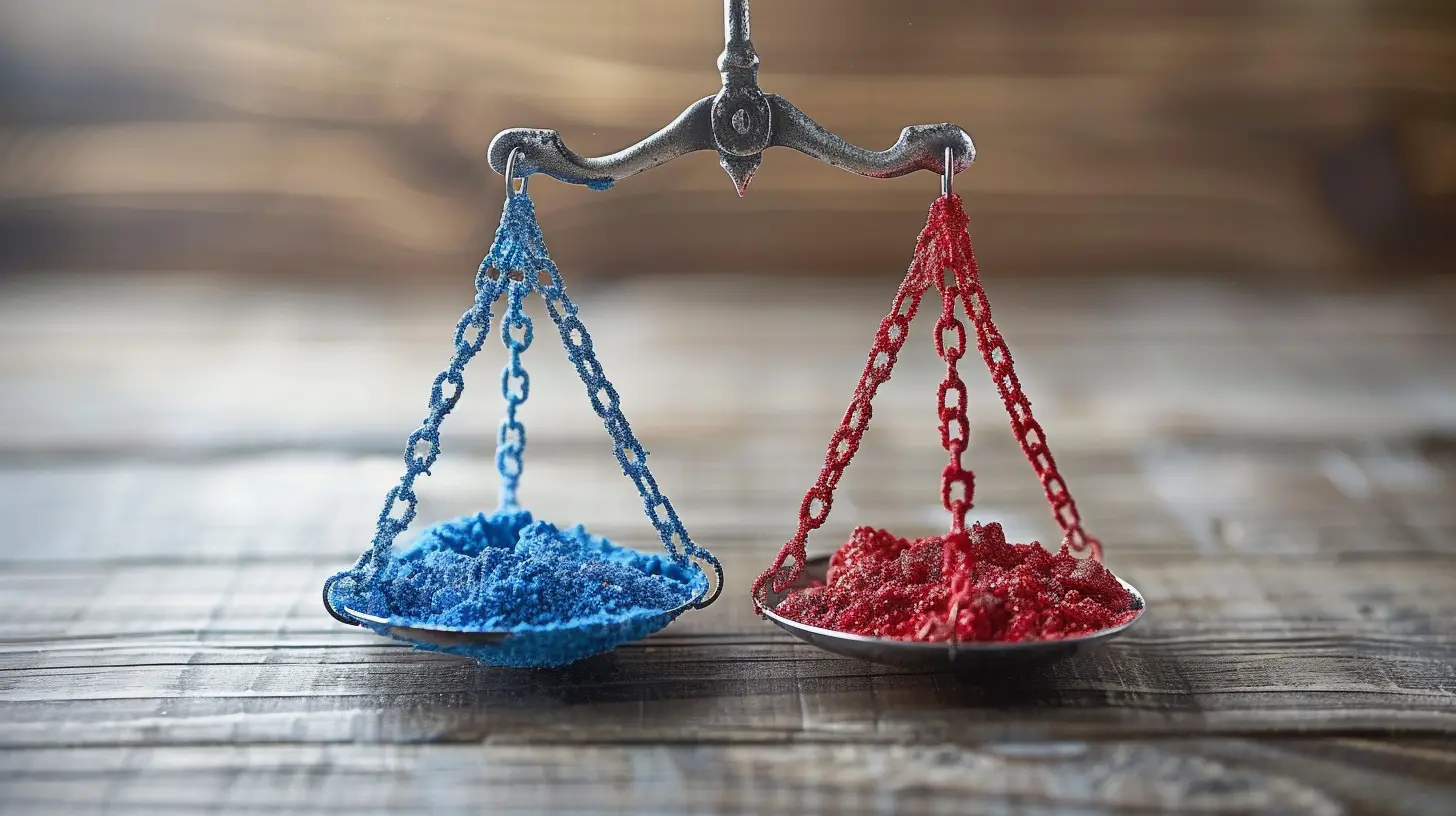Emotional Regulation Without Suppression: Finding Balance
3 July 2025
Here’s the deal—we’re all emotional creatures. Some of us wear our hearts on our sleeves, while others tuck their feelings deep down. But no matter how you roll, emotions are a part of our daily lives. They guide decisions, fuel our passions, and, sometimes, throw our day off balance. That’s why emotional regulation is such a big deal.
But let’s clear the air: regulating emotions isn't about bottling them up. That’s suppression. And suppression? Not healthy. It's like shoving junk under your bed and pretending your room is clean. Sooner or later, the mess comes back to bite you.
The real goal? Emotional regulation without suppression. Finding that sweet spot where you feel your feelings but don’t let them run the show. Let’s dive into how to master that balance.
What Is Emotional Regulation, Really?
Okay, let’s break it down. Emotional regulation is your ability to manage your emotions in a healthy way. It’s not about shutting your feelings off—it’s about knowing what to do with them.It’s like being the DJ of your emotional playlist. You don’t delete the songs, but you pick what plays and when. Angry? Cool, feel that. But maybe don’t throw your phone across the room. Instead, press pause, breathe, and ask yourself, “What’s really going on here?”
Suppression vs. Regulation: Know the Difference
Here’s where people get tripped up. Suppression and regulation sound similar, but they’re actually worlds apart.- Suppression is when you push your emotions away, pretend they don’t exist, or hide them from others. You’re basically saying, “Nope, not dealing with this right now.”
- Regulation, on the other hand, is saying, “Hey, I see you, emotion. Let’s figure this out together.”
Think of suppression like holding a beach ball underwater. Sure, you can do it for a while, but eventually, that ball’s gonna shoot up and probably smack you in the face. Regulation is more like floating with the ball—acknowledging it’s there, but not letting it drown you.
Why Suppressing Emotions Backfires
Suppressing emotions might seem like the easiest route—especially in the middle of a work meeting or during an argument—but it’s got some serious side effects:- Build-up of stress – Buried emotions fester, creating a pressure cooker inside you.
- Physical symptoms – Headaches, muscle tension, stomach issues—yep, emotions can live in your body.
- Poor emotional health – Suppression disconnects you from your feelings, and over time you may struggle to even recognize what you feel.
- Damaged relationships – If you never express yourself honestly, how can people truly know you?
In short, when you suppress, you aren't solving a problem—you’re hitting snooze. And that alarm? Always comes back.
So, What Does Real Emotional Regulation Look Like?
Good question. Emotional regulation isn’t about being Zen 24/7 or never crying. It’s about processing emotions in a way that makes space for them without letting them crash through your life like a wrecking ball.Here’s what it looks like in action:
- You notice the feeling. "Ah, that’s anxiety. Okay."
- You name it. “I’m feeling nervous because of this job interview.”
- You accept it. “It’s okay to be nervous. This matters.”
- You respond thoughtfully. “I’ll prepare well and do a breathing exercise before I go.”
See the difference? You’re not ignoring the emotion—you’re working with it.
Strategies to Regulate Emotions Without Suppression
Now we’re getting to the good part. How do you actually regulate emotions in a healthy way? Let’s run through some simple, powerful strategies:1. Get Curious, Not Judgmental
The next time an emotion hits you like a wave, instead of saying “Ugh, I shouldn’t feel like this,” try asking, “What’s this feeling trying to tell me?” Emotions are messengers—not enemies.Curiosity opens the door to understanding. Judgment slams it shut.
2. Practice Mindfulness
Mindfulness isn’t some woo-woo trend—it’s a legit, science-backed tool for managing emotions. It’s about being present and noticing your thoughts and feelings without judging them.It can be as simple as sitting still for 5 minutes, breathing normally, and observing what’s going on inside you. No need to fix anything. Just notice.
3. Label Your Emotions
Putting a name to what you’re feeling helps bring clarity. Saying “I’m feeling overwhelmed” is better than just feeling like a chaotic mess inside.Remember: if you can name it, you can tame it.
4. Use “Emotion Surfing”
Imagine your emotions like waves. They rise, they peak, then they fall. You don’t need to fight them. Just ride them out. When sadness hits, let it in… but don’t unpack your bags and live in it. Sit with it, feel it, let it pass.5. Move Your Body
Sometimes, your body needs to do what your words can’t. Emotions can get stuck, and movement helps release them. Go for a walk. Dance in your room. Hit the gym. Punch a pillow if you need to (just don’t punch your coworker).Physical activity is a game-changer for emotional regulation.
6. Journal It Out
Ever have so many emotions you can’t think straight? Writing them down is like transferring all that mental chaos onto the page. It gives your mind a break and helps you process things more clearly.You don’t need to write a novel. Just a few thoughts can lighten the load.
7. Build Emotional Vocabulary
The more words you know for emotions, the better you can pinpoint what you’re feeling. Angry? Or is it frustrated, irritated, resentful, or outraged? Each has its own flavor, and knowing the difference matters.It’s like having more colors in your crayon box. You can draw a more accurate picture of what’s happening inside.
8. Set Boundaries
Sometimes emotional chaos comes from saying “yes” when we really mean “no.” Or letting people overstep our limits. Setting boundaries isn’t being mean—it’s being responsible for your own emotional well-being.Boundaries create emotional breathing room.
9. Talk It Out
Human beings are wired for connection. Sharing your feelings with someone you trust can help you see your emotions from a different angle and feel supported.You don’t need to have it all figured out to start talking. Just be real.
The Role of Self-Compassion
Look, let’s be honest—emotions can be messy. You won't always handle them perfectly. And that’s completely okay.Being kind to yourself when you feel overwhelmed or when you “mess up” emotionally is one of the most important parts of regulation. Self-compassion isn’t a fluffy concept. It’s crucial for resilience.
It’s like being your own best friend instead of your worst critic.
Emotional Regulation in Daily Life
You don’t need a therapist's couch or a yoga retreat to work on this stuff. You can practice emotional regulation in everyday situations. Here’s how it shows up:- In traffic: Instead of raging, you take a deep breath and blast your favorite song.
- At work: You notice frustration creeping in. Instead of snapping, you take a walk.
- With family: You feel misunderstood. Instead of shutting down, you calmly express yourself.
These little moments matter. They add up. Each one builds emotional strength.
Teaching Emotional Regulation to Kids (And Relearning It Yourself)
Guess what? Most of us weren’t really taught how to handle emotions growing up. We were told “stop crying” or “man up.” So if emotional regulation feels foreign, you’re not alone.If you’re a parent, this is a golden opportunity to change the game. Teach your kids to name their emotions, express them safely, and work through them. And while you’re at it, reparent yourself a little. It’s never too late.
Final Thoughts: The Balance Isn’t About Perfection
Balancing emotions isn’t about being some kind of feeling robot. It’s about honoring your emotions and being in charge of your actions.You’re allowed to feel deeply and still pause before reacting.
You’re allowed to be angry and still speak with respect.
You’re allowed to cry and also keep moving forward.
It’s not either/or—it’s both/and.
That’s emotional regulation without suppression. It’s powerful. It’s liberating. And it’s something you can do—starting today.
all images in this post were generated using AI tools
Category:
Emotional RegulationAuthor:

Gloria McVicar
Discussion
rate this article
1 comments
Layne Alexander
This article offers valuable insights into emotional regulation by emphasizing the importance of balance over suppression. By learning to acknowledge and process emotions rather than stifle them, we can foster healthier mental well-being and more authentic connections with ourselves and others.
July 30, 2025 at 4:38 PM

Gloria McVicar
Thank you for your thoughtful comment! I'm glad you found the insights on balance in emotional regulation valuable. Acknowledging emotions is indeed key to fostering healthier connections.


